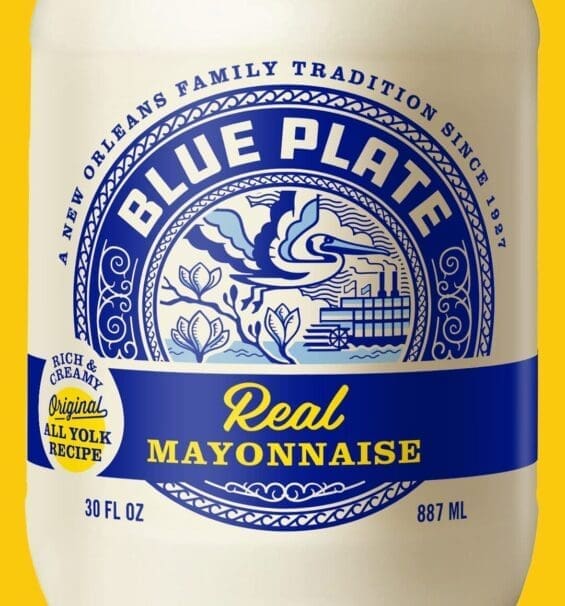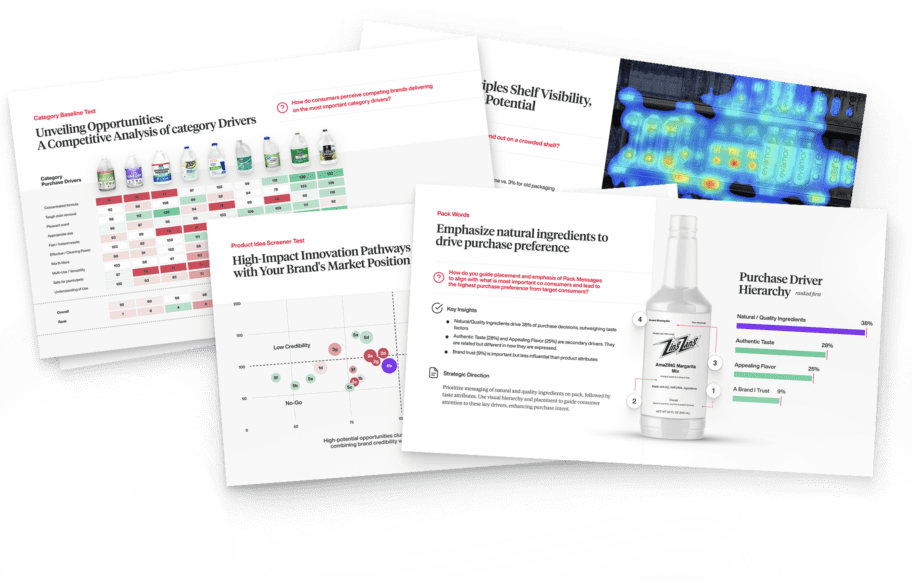The competitiveness of the consumer packaged goods industry creates an environment where only the best packaging designs continue to exist. Even though most companies are aware of this, we find the average CPG brand puts forth mediocre effort into their CPG packaging design strategy.
New to market companies leaning on the CPG brand owner tend to settle for “good” designs. Their assumption of good is based on having a category-friendly design system alongside messaging that the brand believes will resonate with the consumer.
Existing brands (including category leaders) delegate the responsibility to the marketing team. The marketing department is told to keep the look consistent with the brand. They are also advised to align with category leaders while finding a way to disrupt the category theme…this is confusing, to say the least.
Can we be honest? Taking either path is essentially rolling the dice on your CPG brand’s performance. For 99.9% of the winning CPG brands, shelf success didn’t happen by accident. At SmashBrand, through CPG package design testing, our packaging design methodology increases a brand’s confidence in product performance while lowering the retailer’s risk when investing in your company.
Here’s how we do it.
Considerations for CPG package designs.
The first step to packaging design begins with the consideration of both brand identity and brand equity. If you are a new brand, then this is irrelevant, but even so, looking at the competitors’ brand identity and equity helps identify your brand differentiation. You can then forecast (with a willingness to let it go in the future) your brand positioning or competitive difference in the CPG industry.
When keeping “begin with the end in mind” thinking at the forefront of brand development, you will positively influence the preliminary steps of the design process. It’s easy to get ahead of ourselves and sprint into CPG commerce, but this is how most CPG brands fail. Instead, we need long-term thinking, patience, and process to prevent shelf stagnation and encourage top of category performance.
A final but important consideration before the package design process is FDA requirements. Never a fun consideration, but neither is filing taxes or HR reporting. However, knowing your limitations (or opportunities) for a product puts boundaries on our creative thinking helping us narrow in on the right purchase drivers for our category.
Understanding the retail store location.
A consumer product can live in multiple retail establishments and positions within each retail environment. Establishing your desired retail position while accepting the reality of your category is a necessary step before pushing forward with your CPG branding and design strategy.
Who is your ideal shopper and where do they shop? Going in order from consumer to retailer is the right path to determining how your product will perform. Here are a few questions to ask before designing retail packaging.
Food packaging design.
What type of food products do you make? Where will this product sit in the store? Does Whole Foods plan to keep it in the snack section or near the register? What category lives next door to where your product will sit?
Beverage packaging design.
Is your beverage found in the fridge or on a shelf? Does it include secondary packaging, standalone packaging, or both? Trader Joe’s and Walmart have different points of purchase and ways to stand out, have you considered this? Does your brand carry over to both retailers if the mass market is your approach?
Shelf presence.
Understanding the aisle and category is not enough to determine shelf success. A deeper look at the shelf and how it fits the consumer’s eye is a requirement for CPG package design. When designers create your graphic design, they see your product at eye level. Sure, they have 3d rendering programs to visualize all angles, but shelf expectation isn’t a consideration most designers understand.
So while they may consider consumer behavior and brand recall, none of this matters if consumers cannot see design elements when viewing our product.
Top of shelf placement.
Top shelf whiskey in a bar is not the same as whiskey on the top shelf of a grocery store. When comparing apples to apples, premium whiskey sitting on the top shelf will perform poorly compared to premium whiskey at eye level. Unless they know their positioning ahead of time.
Does your product sit at or near the shelf? If so, consider how customers must tilt their necks and look up to see your product. Your entire design may change because of this single fact.
For example, you might consider a block bottom bag for your coffee product. But if this coffee product sits on the top shelf, the sales copy is essentially invisible to the consumer.
Tip: If your product’s top shelf is unavoidable, consider investing in shelf-talkers that help drive eyeballs upwards.
Eye-level placement.
Lucky you. Not much to say here. If you have it, own it! Don’t take eye-level placement for granted and recognize the enormous opportunity you have.
Bottom of shelf.
Looking down is tough enough, but asking shoppers to bend down to grab your product is a big ask. If your product sits at or near the bottom shelf, make the top of your packaging presentable. A can or bottle product should invest in custom packaging, allowing for messaging to appear on the top of the product.
Product messaging that compels.
CPG brands who communicate the purchase drivers consumers recognize increase their likelihood of succeeding on the shelf. We all know the importance of including messages that resonate with buyers, but brands must speak to them in a unique way.
For example, if sustainability through recyclable packaging is part of your brand strategy, don’t lean on the common recycle logo and sustainable look. What unique words will describe your sustainable materials in a novel yet recognizable way by consumers?
Often, it isn’t the words alone that make a difference, it’s in conjunction with font styles and sizes that match the message intent. These are important factors to test during the packaging design process.
The consideration phase.
A package cannot solely consider how it “looks” on a shelf and needs to consider how it “feels” in the consumer’s hands. Yes, we’re talking about the feel of packaging material. However, we’re also talking about the emotions and feelings a product speaks to a potential customer.
Returning to sustainability, from afar we think of natural imagery and calming tones but up close we may think of the environmental impact and societal change. The consideration phase is a continuing conversation that brings consumers closer to a final purchase decision.
Repeat purchases.
Being an active participant in the CPG industry prevents you from assuming the role of selling to one-time buyers. If you want to own the retail shelf, your packaging needs to reinforce the buying experience past the point of purchase.
To this point, packaging solutions must do what the name implies; solve problems. Consumers find a sizable chunk of your brand value within the experience.
Like the consideration phase, the conversation continues after the point of purchase. The durability of the packaging, the messaging that speaks to the consumer, and how they look every time they pull it out of the pantry or fridge all matter.
Repeat purchases drive commerce in CPG stores, so you need to design for repeat purchases if you want to go along for this ride.

Nice Package
Don’t miss out on our monthly newsletter Nice Package!
Each month, we deliver a data-driven newsletter directly to your inbox, unpacking a critical topic in the FMCG & CPG industry.
"*" indicates required fields
CPG packaging design agency
SmashBrand is a consumer packaged goods design agency that helps brands like you win on-shelf. Through our packaging design process, we’ve helped brands big and small become category leaders. Book a time to discuss your project with our packaging design agency.
Subscribe to
Nice Package.
SmashBrand’s Nice Package: Stay current with our latest insights
Free Resource.

CPG product repositioning guide.
Explore the five undeniable signs your CPG product needs repositioning along with strategies for leveraging consumer insights for a guaranteed market lift.
Download Whitepaper About CPG product repositioning guide.


